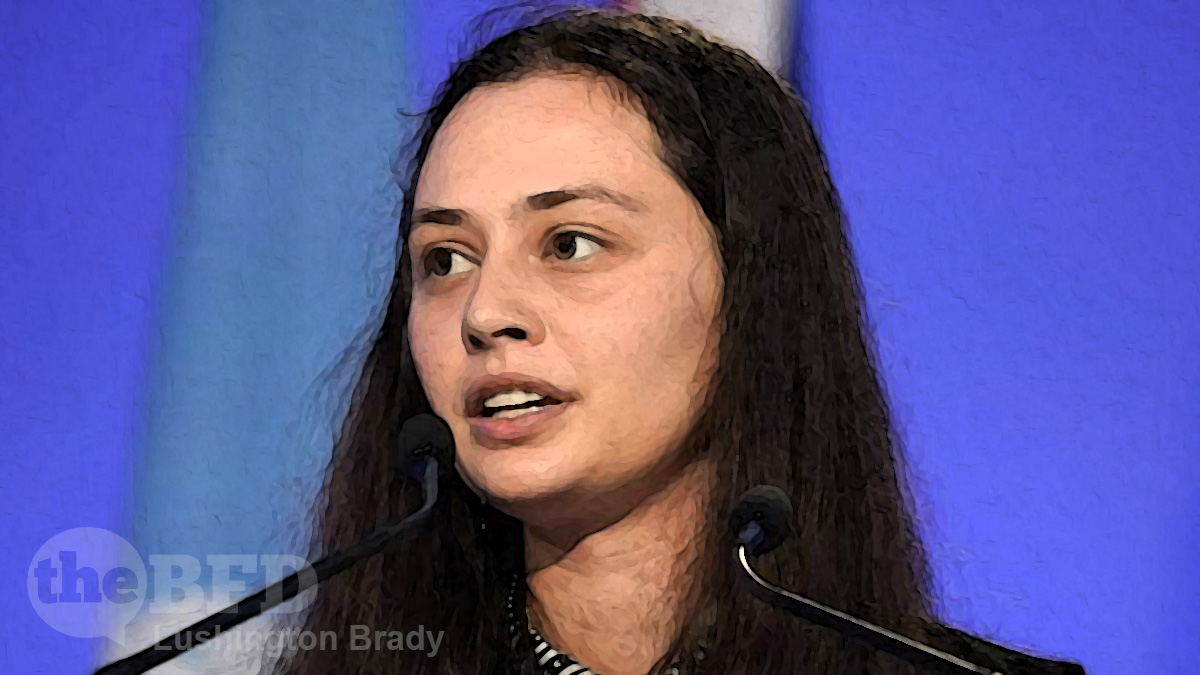Jacinda Ardern, for all her posturing and wind-bagging about climate change, isn’t even deigning to grace the world’s biggest climate gab-fest. Probably she knew she’d be competing for the cameras with the media’s favourite climate pinup-girl. There’s nothing a diva hates worse than having to fight for the spotlight.
Instead, New Zealand will be officially represented by the charismatic, dynamic James Shaw. (Pause for laughter.)
But another New Zealander has already spoken: on behalf of “indigenous communities”. This might raise some awkward questions about just how “environmentally-conscious” indigenous communities really are.
Maori climate activist India Logan-Riley has spoken at the opening of the UN climate summit in Glasgow representing indigenous communities.
In her address at the opening of the two-week summit, known as COP26, Logan-Riley said warnings of sea-level rise and wildfires has gone unheard.
As well they might: because they’re baloney. Sea-level rise is a process that has been going on for the past 17,000 years. Hysterical claims of the world being “inundated” have proven to be about as accurate as any other climate prediction — “wildly exaggerated” is putting it kindly.
As for wildfires: the evidence there is even more damning of the climate bandwagoneers’ ludicrous catastrophism. Wildfires have declined — dramatically.
NASA concedes that wildfires have declined by 25% over the last two decades. Longer term, research has found that “there is less fire in the global landscape today than centuries ago”. Fire severity, despite the media hysterics over recent events, has also declined in places like the US.
Even economic impacts and human fatalities show no trend: despite more humans living in fire-prone areas.
But the reference to wildfires from a “Maori climate activist” is a bit of an own goal.
“This is an invitation to you. Learn our histories, listen to our stories, honour our knowledge and get in line or get out of the way,” Logan-Riley said.
Stuff
Learn your histories, eh?
A new study from an international team of scientists including researchers from The Australian National University (ANU) has linked an increase in black carbon levels found in Antarctic ice to 700-year-old Maori land burning practices in New Zealand.
The findings, which are published in Nature, challenge past assumptions by demonstrating humans were responsible for environmental changes earlier, and on a much larger scale, than previously thought […]
The researchers determined New Zealand was the most likely origin of the increased black carbon emissions after demonstrating charcoal records – which showed a major increase in fire activity in 1300 – coincided with the estimated arrival, colonisation and subsequent burning of much of New Zealand’s forested areas by the Maori people.
Oopsie, one might say.
(Note, too, the reference to “colonisation”: which kind of undermines the “indigenous” posturing, n’est-ce pas?)
This research lends weight to the controversial “dangerous idea” of Prof. Jared Diamond: “tribal people often make war and damage their environment”. The moa, Haast’s eagles and Huia, just to name a few species, can attest to just how Diamond’s axiom played out in New Zealand.
“Honour our knowledge”, you say? So, just how have Maori academics responded to the embarrassing Antarctic evidence? With this:
“Mahuika goddess of fire gifted her fingernails of flames to enable us to have fire for warmth; fire for sustenance; fire to provide nutrients for the earth.”
Scimex
So much for “indigenous science”, then. It’s back to what Carl Sagan called “the demon-haunted world” of superstition.
Please share this article so that others can discover The BFD

